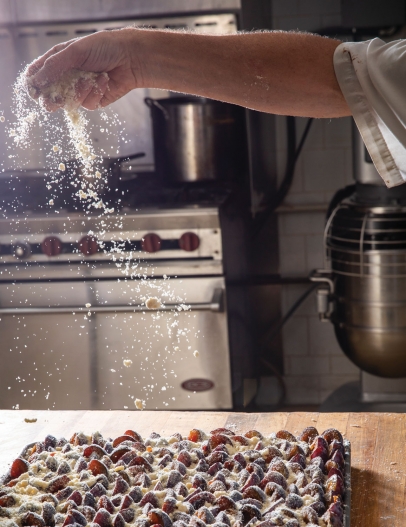The Art of the Loaf
Give Thanks Bakery in Rochester
When Master Baker Gerald Matthes attempted his first loaf of bread, “I wrecked my wife’s oven. I had to buy her a new one. I’d never baked anything in my life.”
But he stuck with it, having recently discovered that his great-great- great-uncle had owned a bakery in Germany. “I thought, ‘Wouldn’t it be interesting to walk in the footsteps of my ancestors?’”
And so, as he continued his decades-long advertising career, he began taking courses in artisan bread making at the Culinary Institute of America in New York and Napa Valley, and the National Baking Center in Minneapolis. In 1997, along with pastry chef Jean-Marc Seranon, he opened Give Thanks Bakery in Rochester.
From the beginning, “We were dedicated to show the love of God to people when they walk in our door, so that they feel more encouraged and affirmed when they walk out,” says Matthes.
“We know our customers’ kids, their struggles, their joys.” That intense focus on clients is “our insulation against disaster.”
The pandemic has proven him right. “People are coming in droves to support us,” says Matthes. That’s despite how the realities of COVID-19 have mandated a temporary closing of Give Thanks’ thriving café, and a decrease in the variety of its renowned pastries— though not in croissant production; plain, almond, chocolate, and ham and cheese remain in high demand.
“We have to let people in two at a time, like Noah’s ark,” says Matthes. “And we’re finding on Saturdays that people are waiting in lines that go down the block, in order to get their bread.” Counter staff and the bakers continue to catch up with customers, masked and socially distanced. “Those conversations can slow things down,” says Matthes, “but people don’t seem to mind.”
Of course, no one is that patient for ordinary bread. Give Thanks is dedicated to an Old World, slow-rise approach using natural fermentation. “It takes us three days to develop a loaf of bread: the first day to make the starter, the second to proof and score. We bake on the third day.”
It’s a tough time, but he remains positive. “So many people are revisiting how they eat. They’re looking for wholesomeness, not compromised food. That’s a huge silver lining.”
The Right Rise
Both Matthes and Peterson are true believers in the power of natural fermentation over commercial yeast. Peterson recommends the recipe from The Clever Carrot blog (theclevercarrot.com). There, if you want to go further, you can find Emilie Raffa’s book, Artisan Sourdough Made Simple.
Matthes’ favorite breadmaking primer is For Bread Alone, by his mentor Daniel Leader.
“My son is in California, and finds himself with a lot of time on his hands due to the pandemic. He decided he wanted to make sourdough bread, so I pointed him to Chapter 4 of Daniel’s book. I told him, ‘Starter takes a while, be patient’. Now, he even ships loaves out to us to boast! He’s making excellent bread.”
Both bakers use commercial yeast for breads that need a quicker rise, i.e., croissants, brioche, and cinnamon rolls. For home cooks, Peterson recommends the “glass jarred yeast if you plan to make bread regularly. But if you’re still testing the waters, the individual packages of Fleischman’s active dry yeast are fine. Always check the expiration dates. Store yeast in a room temperature, dry location. I keep mine in my pantry with ease.”
Nan Bauer (@nanlechou) is a food and travel blogger. Find her at zlechoufou.com.





